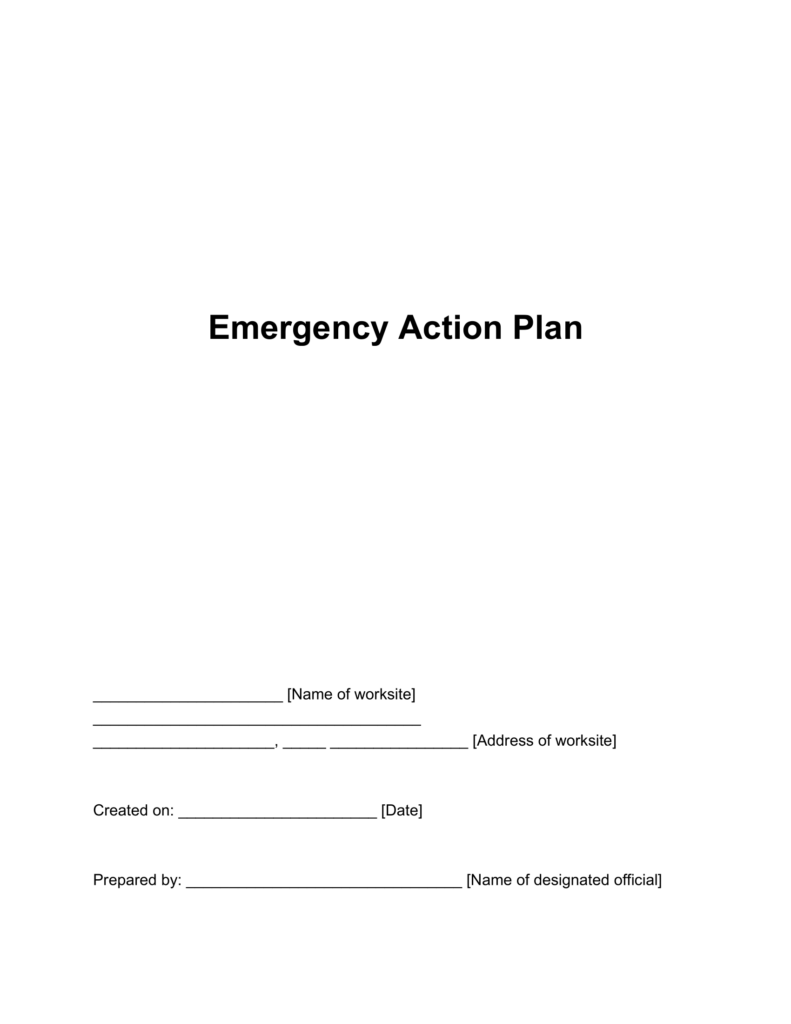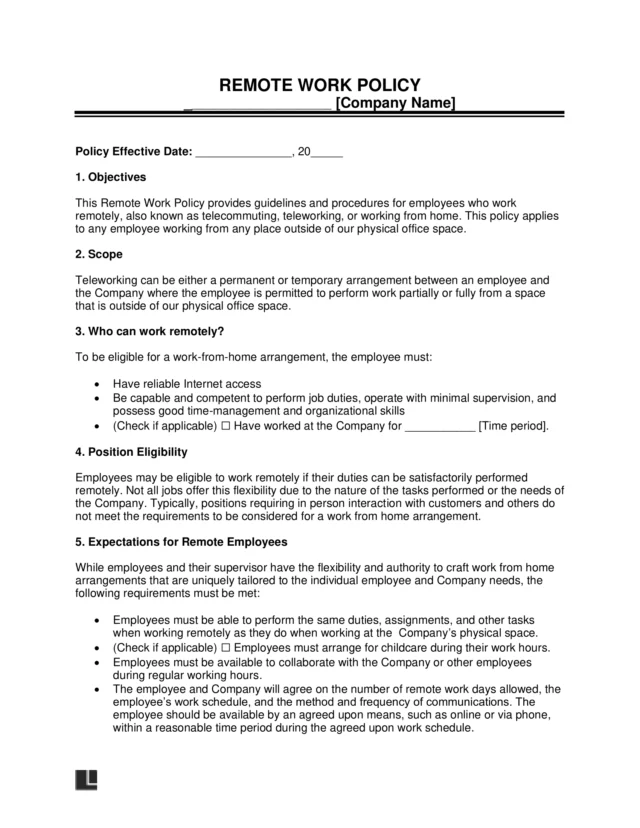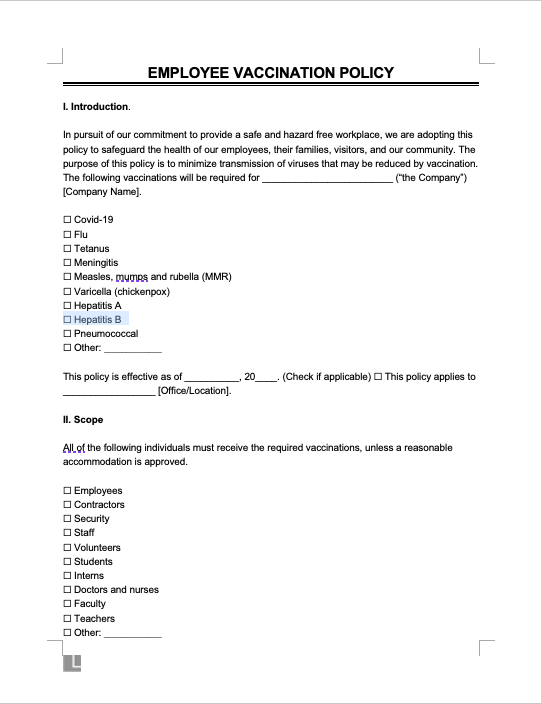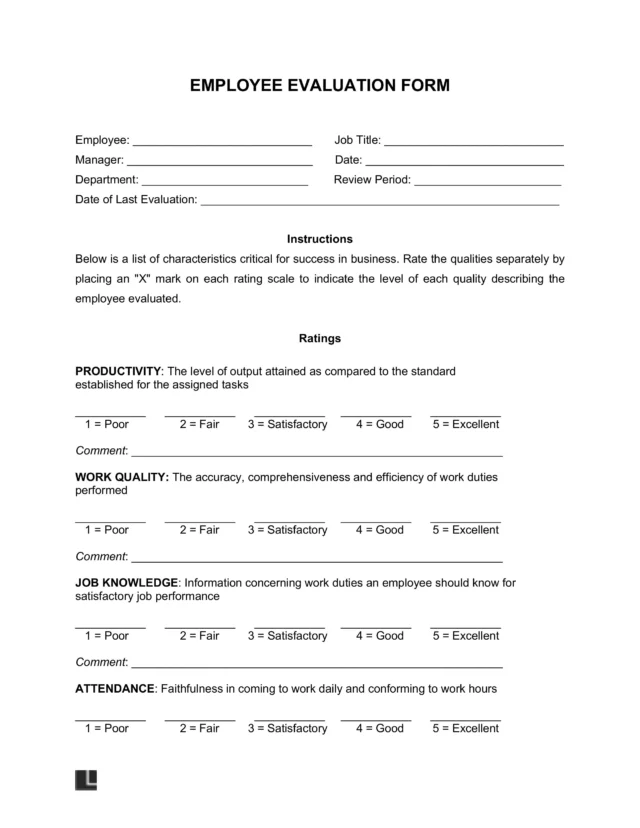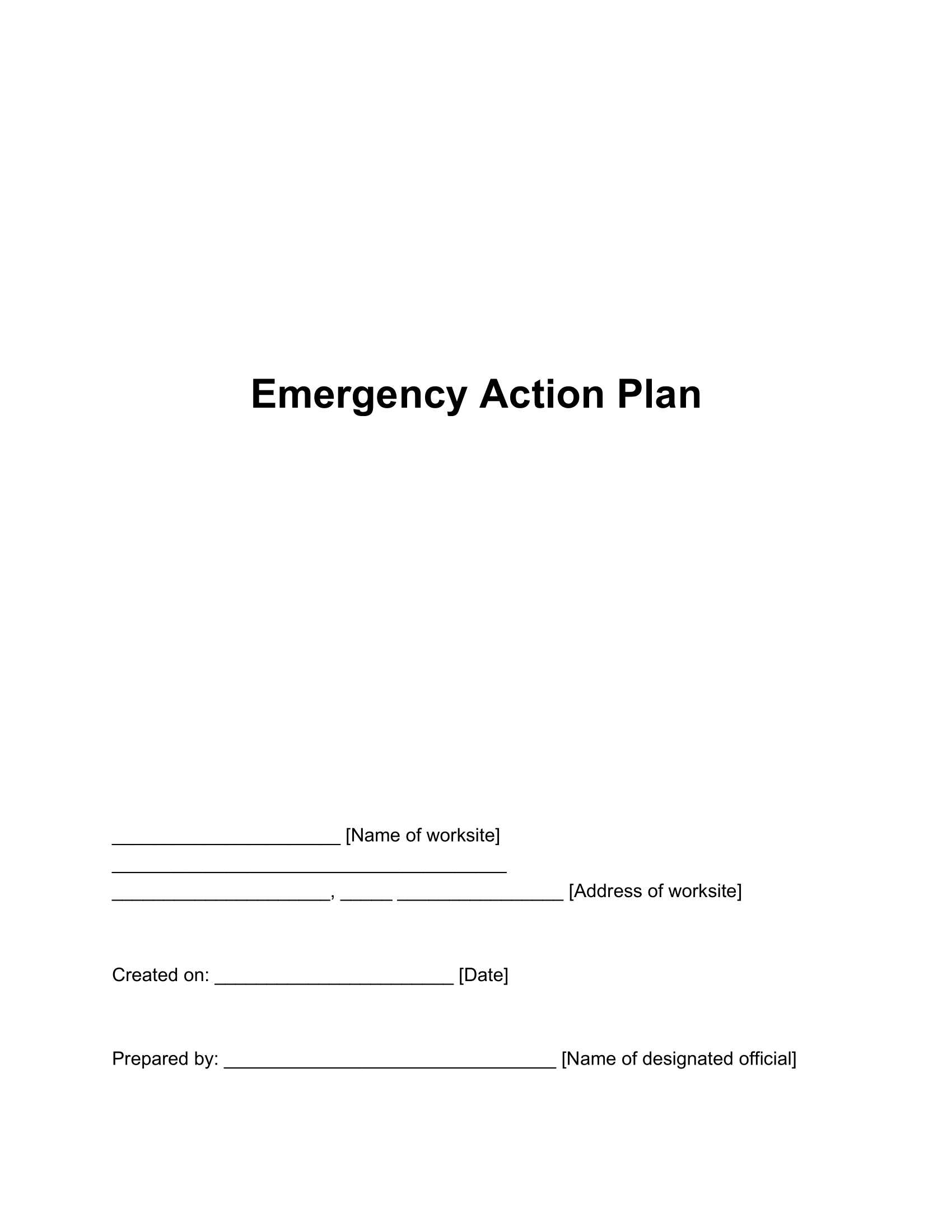An emergency action plan (EAP) is a document that helps an organization prepare for an unexpected situation. This plan ensures everyone within the organization can reach safety and fulfill their assigned roles.
What Is an Emergency Action Plan?
An emergency action plan is a standard process that your company can use in an emergency. It outlines the roles of everyone involved, including employees, managers, and employers.
It is often accompanied by regular training so everyone on the team knows their part in the plan.
What Are the Components of an Emergency Action Plan?
There are numerous components that you need to include in your emergency action plan, including:
- Means of reporting fires and other emergencies
- Evacuation procedures and emergency escape route assignments
- Procedures for employees who remain to operate critical plant operations before they evacuate
- Accounting for all employees after an emergency evacuation has been completed
- Rescue and medical duties for employees performing them
- Names or job titles of persons who can be contacted
Do I Need an Emergency Action Plan?
Some businesses must have an EAP, according to the Occupational Health and Safety Administration (OSHA) (29 CFR 1910.38(a)). These businesses tend to deal with hazardous substances or dangerous work conditions.
You can use OSHA’s Expert System to determine whether you need an EAP. Even if OSHA doesn’t require your business to have an EAP, you can still consider implementing one for the well-being of your employees and the workplace.
What Emergencies Require an Emergency Action Plan?
It’s always a good idea to have an EAP, though hopefully, you will rarely need to use it. Emergency action plans are put in place to prepare businesses for disasters requiring sheltering or evacuating as quickly as possible. You may need to use an emergency action plan in the event of:
- Biological accidents
- Bomb threats
- Fires
- Floods
- Hazardous material spills
- Heavy storms such as tornadoes
- Hostile intruder situations or workplace violence
- Structural failure
How Does an Emergency Action Plan Benefit Your Workplace?
An EAP can offer the following benefits to your workplace:
Can Prevent Employee Injuries and Fatalities
As a business owner or manager, one of your top priorities should be the well-being and safety of your employees. Having an EAP ensures your employees know how to keep themselves and each other safe in any emergency in the workplace.
Can Minimize Structural Damage
Well-trained and well-informed employees will know how to react to an emergency. For example, they will see the protocol in the EAP in the event of a fire. This knowledge will allow them to react quickly by calling the fire brigade or using provided fire extinguishers, preventing the fire from spreading through your workplace.
Can Reduce Confusion By Clearly Communicating Emergency Procedures
Communicating emergency procedures means your employees will know what to do in what situation. They will know how to follow an established procedure, share, and comply with the EAP.
Can Open Opportunities For B2B Partnerships
Enterprises often want their suppliers to have EAPs to ensure they have emergency preparations to prevent any disruption to their supply chain. A solid EAP could be why a business partners with one company over another.
How to Write an Emergency Action Plan
Here’s a list of steps on how to write an emergency action plan:
Step 1 – Include Emergency Phone Numbers
Include emergency phone numbers, including police forces, paramedics, security services, building services, and any other services that may be relevant to your organization.

Step 2 – List the Emergency Response Personnel
It would be best if you also designated who on your team will make up your emergency response personnel, from officials and coordinators to floor wardens and area monitors.
Specify the duties of each person in the event of an emergency. Make sure that team members are designated to help those with physical disabilities. If you have remote workers or hybrid employees, ensure that you have additional designated emergency response personnel.

TIP
Create a chain of command with officers such as evacuation leaders.
Step 3 – Outline the Necessary Training
Consider what kind of training will ensure your employees know the emergency procedures. Confirm that your team knows their responsibilities during an emergency, and record what types of emergencies pose threats. For example, you may need to include whether employees need training on emergency shutdown procedures.

TIP
Give all employees a copy of the emergency action plan in addition to training.
Step 4 – Detail the Critical Operations
Note any critical operations requiring someone to stay on-site to prevent further damage.
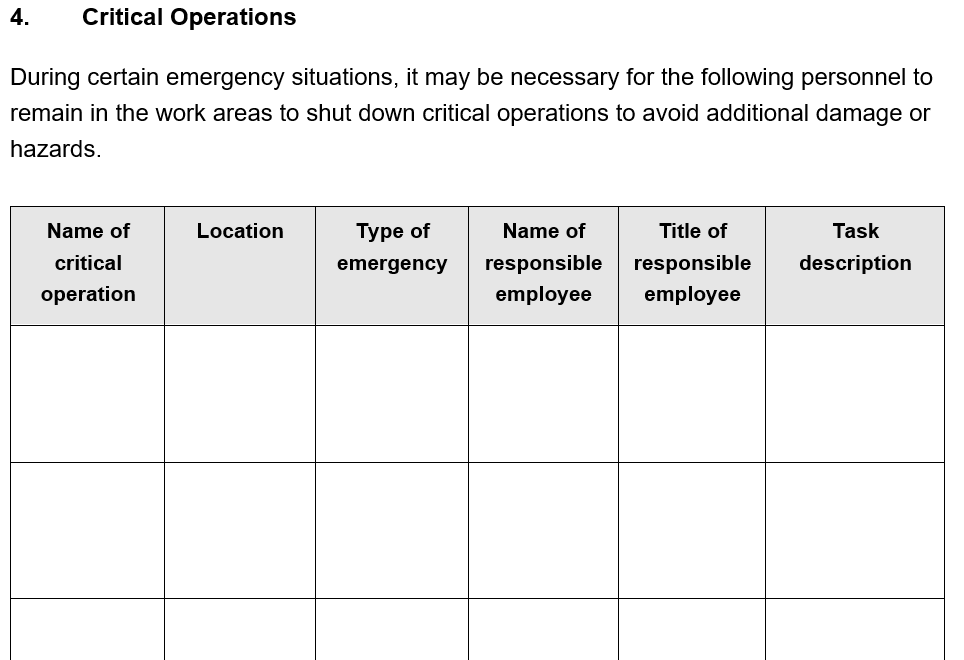
Step 5 – Create an Evacuation Plan
Include evacuation route maps alongside your emergency action plan and detail what types of emergencies require individuals to vacate the premises.
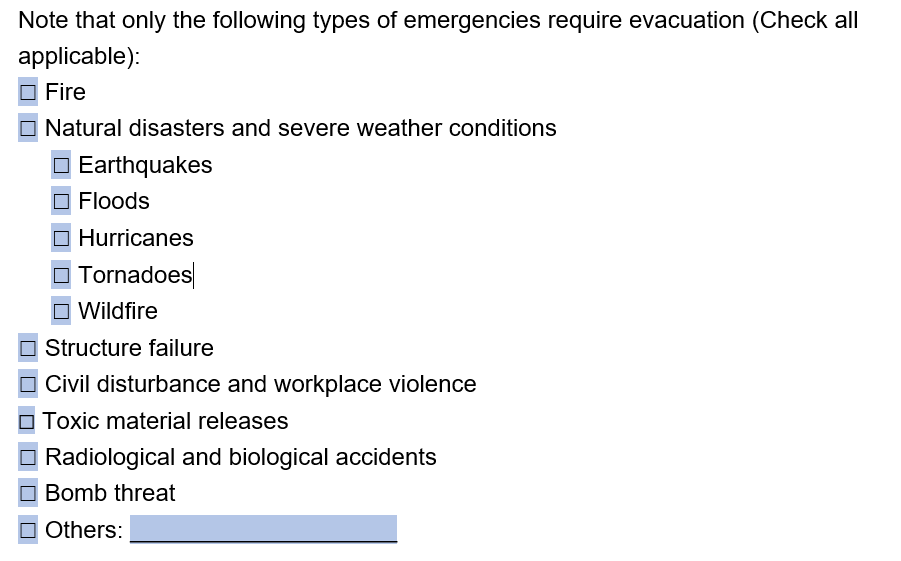
TIP
Include photos of key utility shutoff locations to make them easy to find.
Step 6 – Include the Emergency Procedures
Finally, the emergency procedures section will take up most of your emergency action plan. You need to detail emergency instructions for all possible scenarios. Cover situations such as fires and all potential natural emergencies relevant to your location. It would be best to consider including bomb threats, civil disturbances, and structure failure.
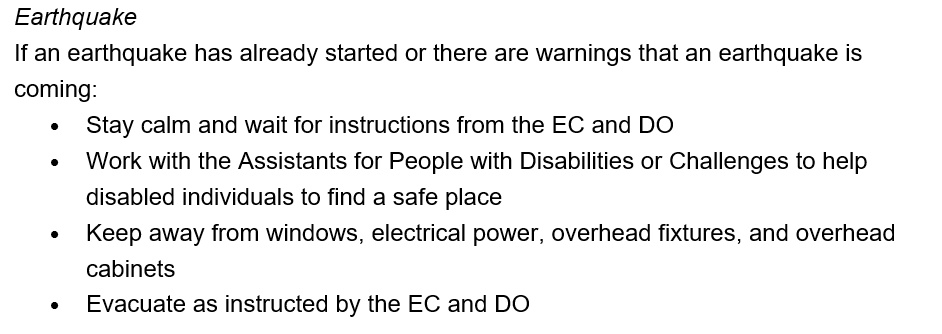
TIP
Let your departments review your EAP and give feedback for practicality.
Emergency Action Plan Sample
Review our emergency action plan template to prepare your workplace for an unexpected situation. Download it as a PDF or Word file below:
